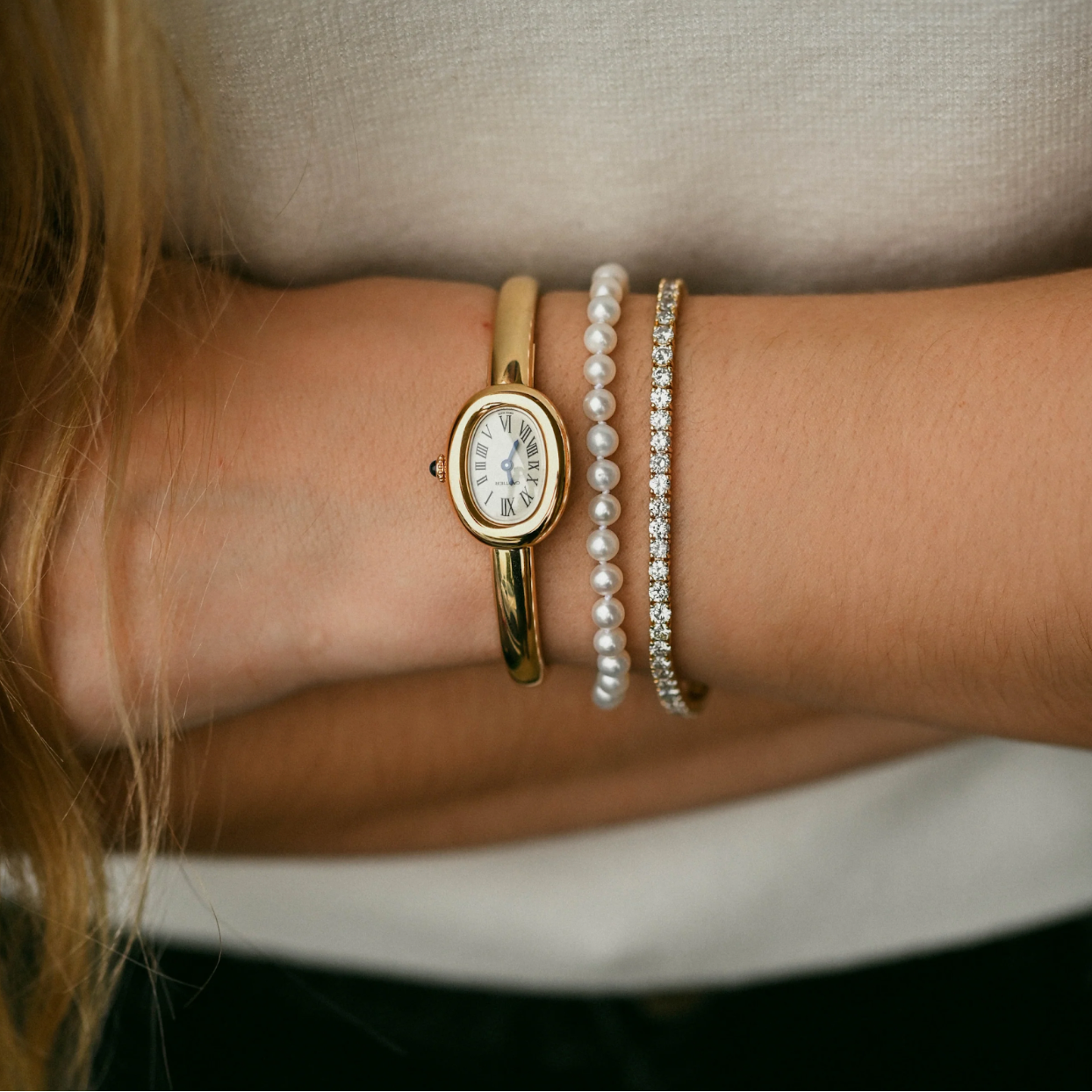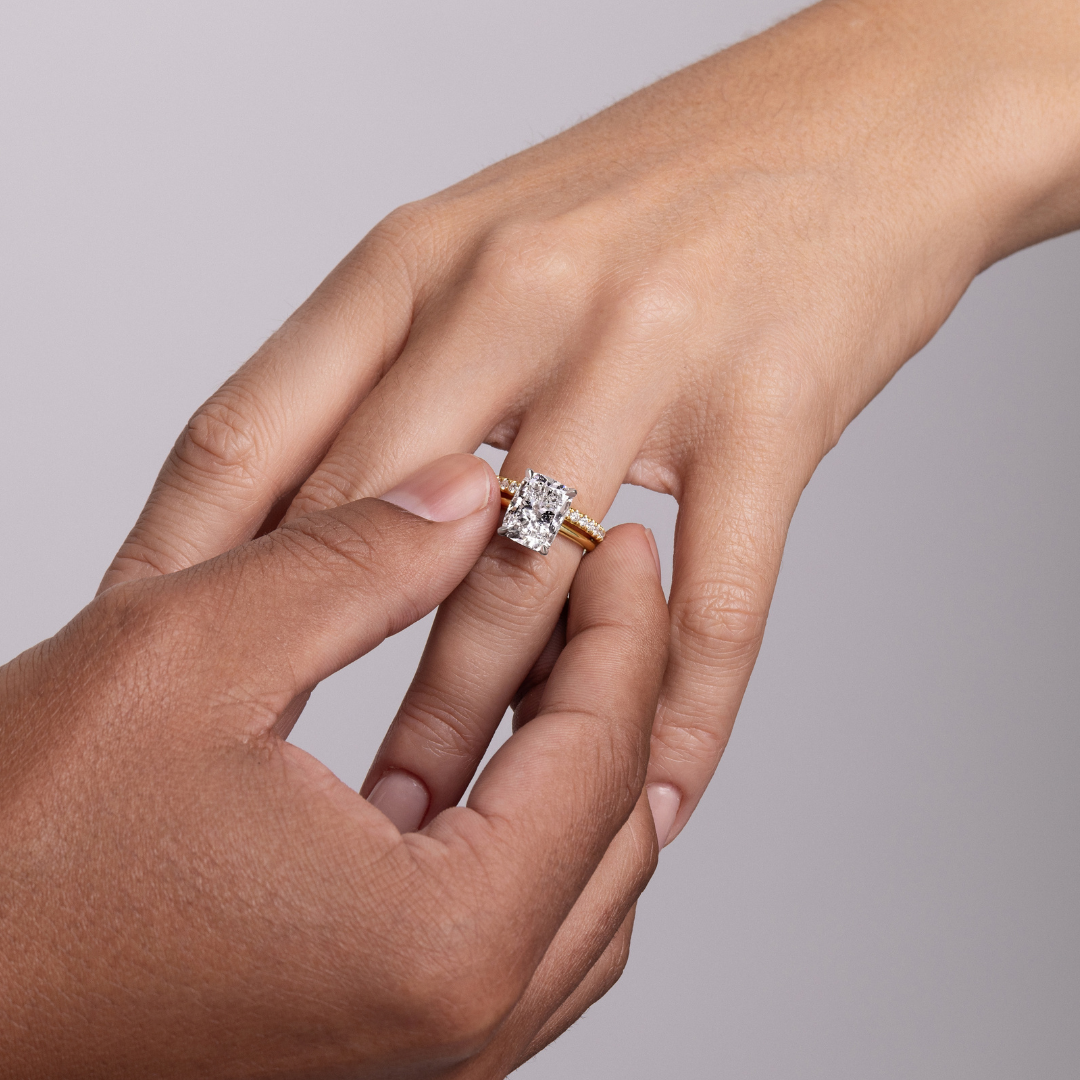The round diamond stands as one of the most favored diamond shapes, renowned for its timeless elegance and exceptional brilliance. However, amidst the array of diamond shapes, the oval cut diamond emerges, effortlessly capturing the classic charm of round diamonds while offering a unique and contemporary allure.
In this article we’ll compare round vs oval cut diamonds and highlight their key differences.
Round vs Oval Diamond: Color
Color is one of the major differences between an oval cut diamond and a round diamond. On average, the oval shape is one-to-two color grades lower than a round cut diamond. What this means is that an average G color on oval cut diamonds would be an average H or I on round diamonds.
There are various reasons for this. First, round diamonds can hide color better due to their intrinsic brilliance. This makes lower-grade colors come off as white.
Secondly, oval cut diamonds have shallower cuts that make them show more color. This means it takes a higher color grade for them to appear white.
Round vs Oval Diamond: Versatility
Round diamonds have a uniform shape, even if they differ in carat size. Conversely, oval stones come in a variety of length-to-width ratios. Most ovals range between 1.28 and 1.70.
When buying an oval diamond, you should note that it will appear long and thin with a length-to-width ratio of more than 1.5. A rounder oval cut will look fuller and wider and have a ratio of about 1.3.
Because of the varying length-to-width ratios, one oval cut diamond can look different from another. On the flip side, round diamonds are more uniform.
Depending on the feel and style to be achieved, an oval cut provides a lot more range when it comes to design. With their side stones, can help create an oval diamond engagement ring that is more unique and personal, especially when you consider that they can be set horizontally or vertically.
Round vs Oval Diamond: Sparkle
A diamond’s sparkle is unmistakable. It is a flash of brilliance emanating from the diamond with each movement.
Typically, a round diamond has the most sparkle of any diamond shape due to its concentrated shape and its faceting structure.
Oval and round diamonds can both be categorized as brilliant cut diamonds. Round brilliant diamonds, with their 58 facets, deliver great white light reflection. The same can be said for an oval brilliant cut diamond, with their 57 to 58 facets.
As a way to assign a metric to the brilliance, diamond labs like the GIA have created a “cut” grade scale ranging from Poor to Excellent for round diamonds. This is generally done using a strict formula that takes into account various metrics, such as pavilion angles, crown, depth percentage, and table.
While the formula isn’t perfect, it is capable of eliminating poorly cut diamonds, making it a great tool to have when buying a round brilliant quality diamond.
Unfortunately, this metric cannot be used for oval-shaped diamonds because a light return grade cannot be assigned to an oval diamond since each oval is unique. The elongated diamond shape of a skinny oval has a light return profile different from a round one.
For fancy-shape diamonds, any shape other than a round diamond, you can judge the quality of the cut based on the polish grade and symmetry. For example, if the polish and symmetry are both graded as excellent, you can assume that the cut grade is also excellent.
Round vs Oval Diamond: Rarity
Round diamond cuts are the most prevalent type of diamond cut available and for good reason. Not only is a round brilliant timeless but it also creates the most sparkly and stunning diamond engagement ring. You can easily find countless options ranging in quality when searching for a round-cut diamond since they are the most popular shape.
Although oval diamonds are the second most desired shape, it can be more difficult to find a diamond if you are looking for specific qualities. Considering that oval cut engagement rings tend to vary widely in shape, it can be even more difficult to find an oval that fits your specifications.
Round vs Oval Diamond: Size
There are a few factors to consider when it comes to the size difference between round and oval diamonds.
Oval diamonds appear larger than round diamonds. This is due to their elongated shape and top-heavy weight distribution.
Even when compared to round diamonds of the same carat weight, ovals tend to be 10% larger than round cut diamonds because of the surface area on display.
Additionally, since an oval cut diamond will always have a shorter width and longer length for its ratio, most people tend to use its length to determine its size instead of its width.
Round vs Oval Diamond: Imperfections
Both a round and oval cut diamond have a brilliance that makes them great at hiding inclusions and blemishes, particularly near the sides of the stones.
With ovals, there are unique imperfections that have to be considered. One is known as the bow-tie effect. This describes a clear shadow across the center of the diamond, resembling a bow tie. This effect has various degrees of severity, but it can only be seen from a face-up angle. This is very common due to the way the oval shape is cut.
Conclusion
When searching for the perfect diamond, the choices are endless. From the classic emerald cut to a princess cut, to fancy shape options like the pear shape or marquise, doing your research will help you make the best choice.
When it comes to a diamond engagement ring, both a round and oval shaped diamond have their appeal. Generally, round diamond engagement rings are more uniform, with consistent shape from one diamond to another. An oval engagement ring, however, can make an elegant statement.
Ovals can vary widely from long and skinny ones to short and wide options. One of the most important things to factor in when choosing a round or oval diamond ring is selecting the best setting to show-off and display the center stone.






Share:
Radiant Cut vs Cushion Cut
Oval Moissanite vs Diamond